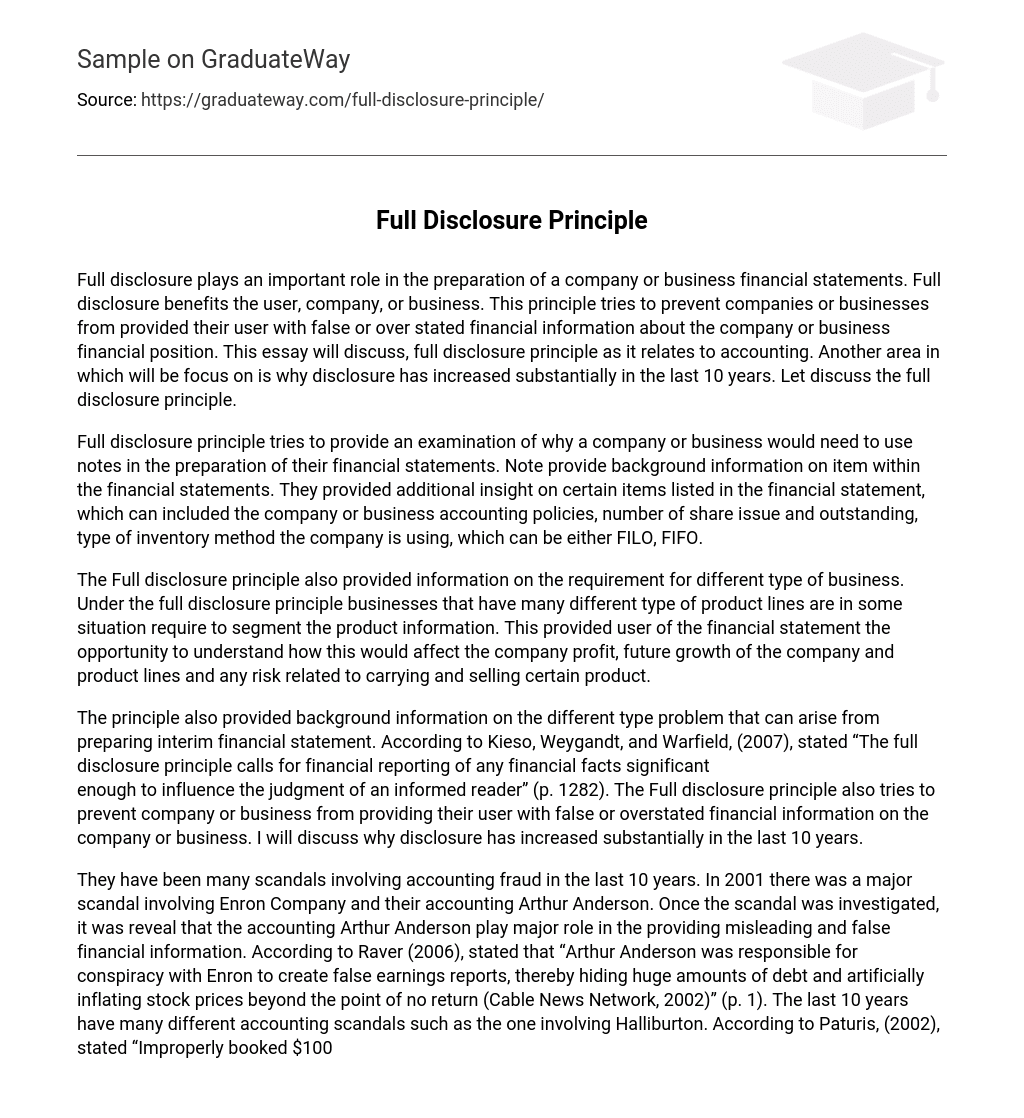The full disclosure principle is crucial when preparing financial statements for companies and businesses. Its primary objective is to prevent the spread of misleading or exaggerated financial information about their economic condition. This principle benefits both users and the company itself. The essay below examines the full disclosure principle in accounting and evaluates the significant increase in disclosure over the past decade.
The purpose of the full disclosure principle is to explain why companies or businesses include notes in their financial statements. Notes provide additional information about items in the financial statements. They offer further clarification on specific items listed in the statements, such as the accounting policies of the company or business, the number of shares issued and outstanding, and the inventory method used (either FILO or FIFO).
The Full disclosure principle includes information about the requirements for various types of businesses. According to this principle, businesses with multiple product lines may need to segment their product information. This allows users of financial statements to understand the impact of these product lines on the company’s profit, future growth, and any risks associated with carrying and selling certain products.
The full disclosure principle, as described by Kieso, Weygandt, and Warfield (2007), mandates the incorporation of all important financial information that can impact an informed reader’s perception (p. 1282). Its objective is to dissuade companies from presenting misleading or overly positive financial data. In the subsequent passage, I will elucidate the reasons behind a substantial rise in disclosure requirements during the last decade.
In the previous ten years, various companies and their accounting firms have been involved in a series of accounting fraud scandals. One notable example was the Enron scandal in 2001, where Arthur Anderson was discovered to have played a significant role in providing misleading financial information. They colluded with Enron to create false earnings reports, concealing debt and inflating stock prices (Cable News Network, 2002). Another scandal occurred with Halliburton, who incorrectly recorded $100 million in construction cost overruns (Paturis, 2002).
More recently, Wall Street encountered a crash due to a scandal concerning derivatives creation and the sale of home mortgages. This led to an economic downturn from which the country is still recovering.
These scandals have revealed weaknesses in financial regulation aimed at safeguarding users of financial information. As a result, there has been an increased demand for full disclosure. The principle of full disclosure necessitates companies’ compliance with transparency rules and regulations. Following this principle has resulted in more extensive information being disclosed in financial statements.
Therefore, it is now essential to implement further regulations to prevent future accounting scandals and ensure stability in the economy as it continues its recovery process (Raver, 2006).
This essay examines the importance of implementing the full disclosure principle in a company or business, as it greatly affects the disclosure of financial information. It also investigates the contents and reasons behind the significant rise of the full disclosure principle in recent years.
References
The book “Intermediate Financial Accounting” by Kieso, D.E., Weygandt, J.J. and Warfield, T.D., (2006) can be found in New York: Wiley.
For information on the Enron scandal, you can visit the article “The Enron Scandal: the Crime, Scandal, Tragedy, and Controversy of the Century” by Raver, E., (2006). This article is available at http://www.associatedcontent.com/article/100479/the_enron_scandal_the_crime_scandal–pg2.html?cat=3.
The Corporate Scandal Sheet, authored by Patsuris, P. in 2002, can be found on Forbes’ website at http://www.forbes.com/2002/07/25/accountingtracker.html. The article was retrieved on January 9, 2010.





